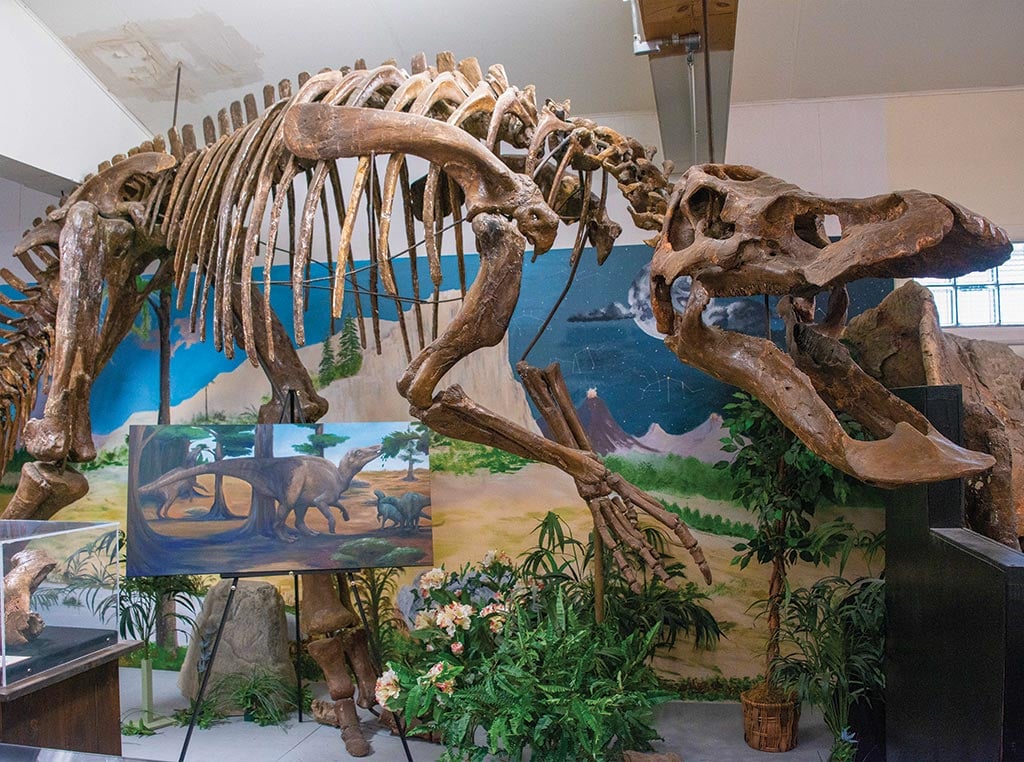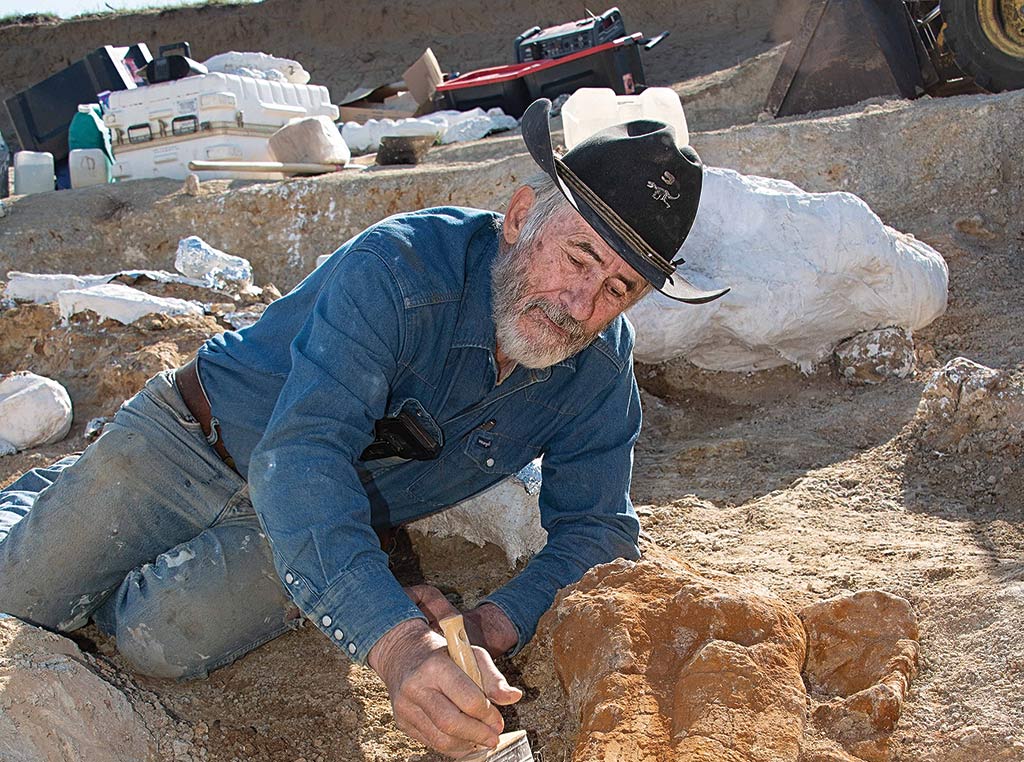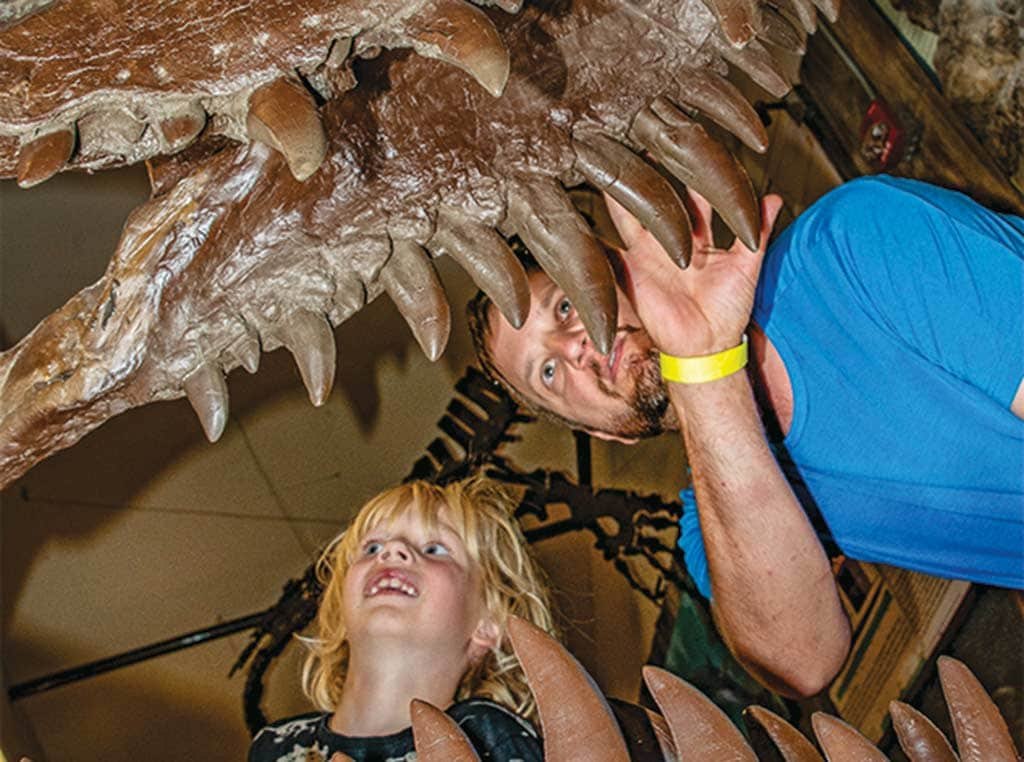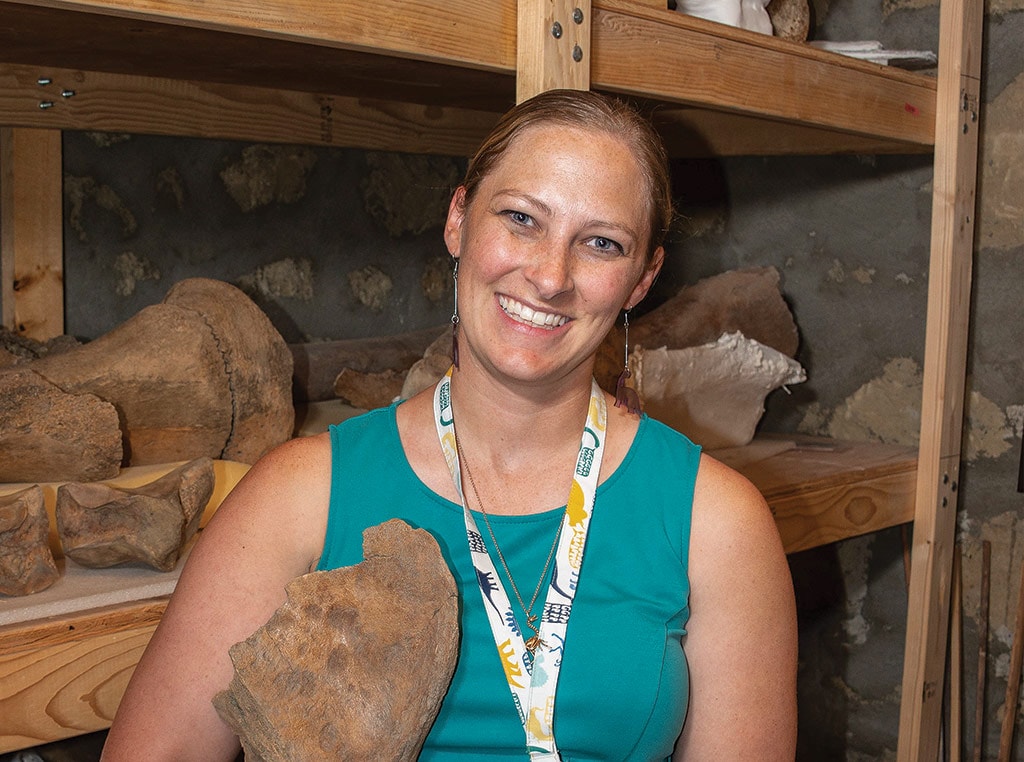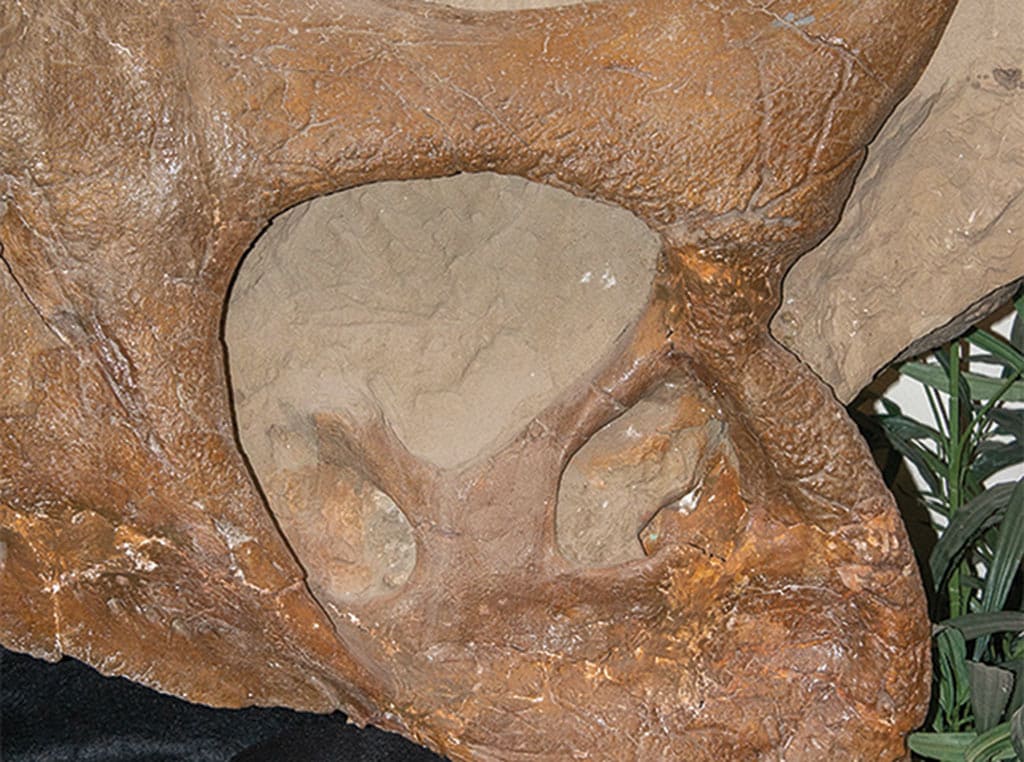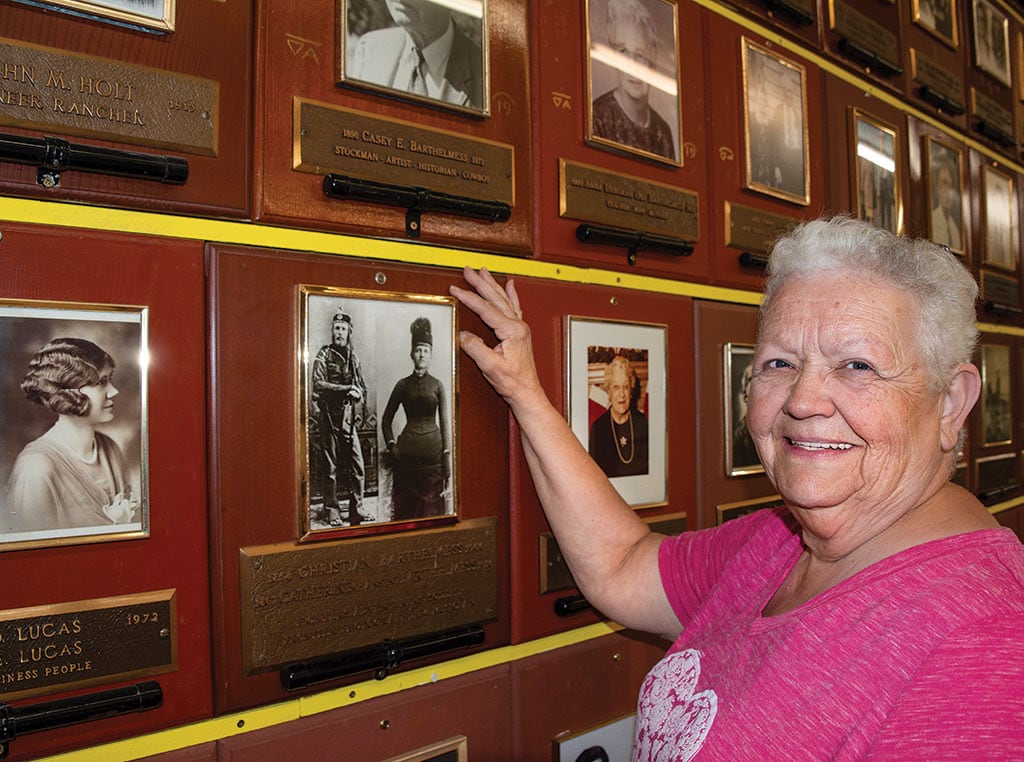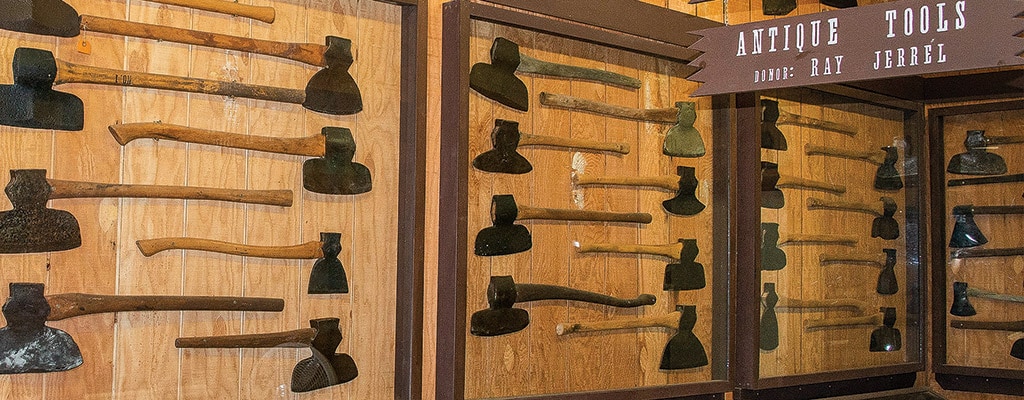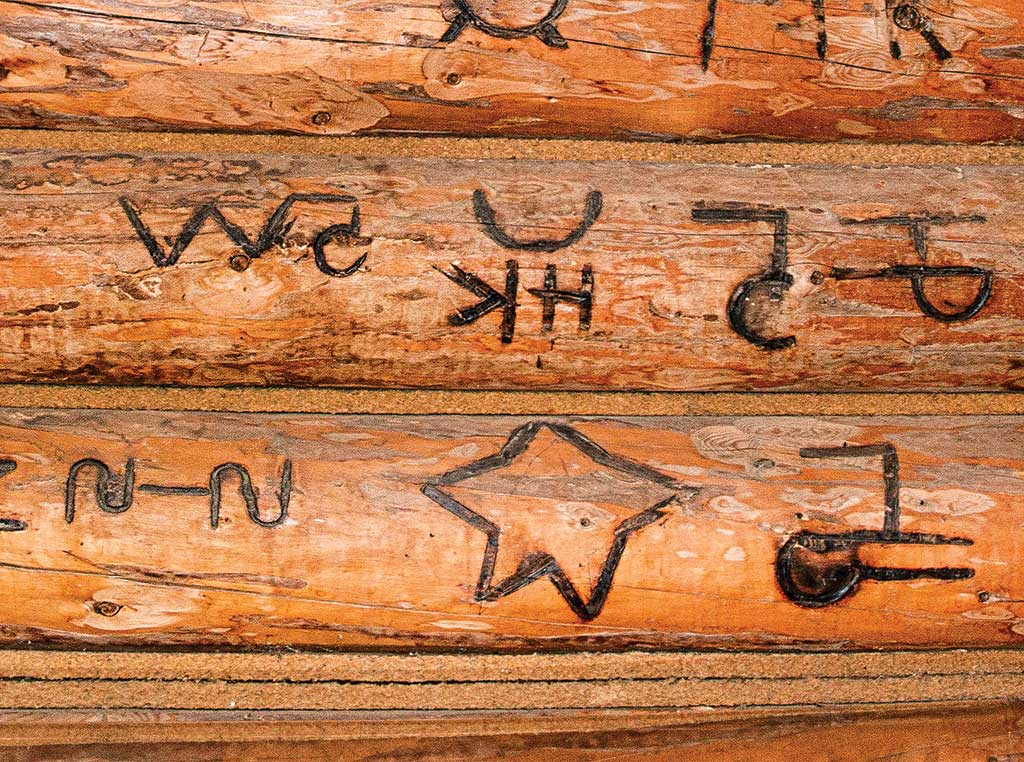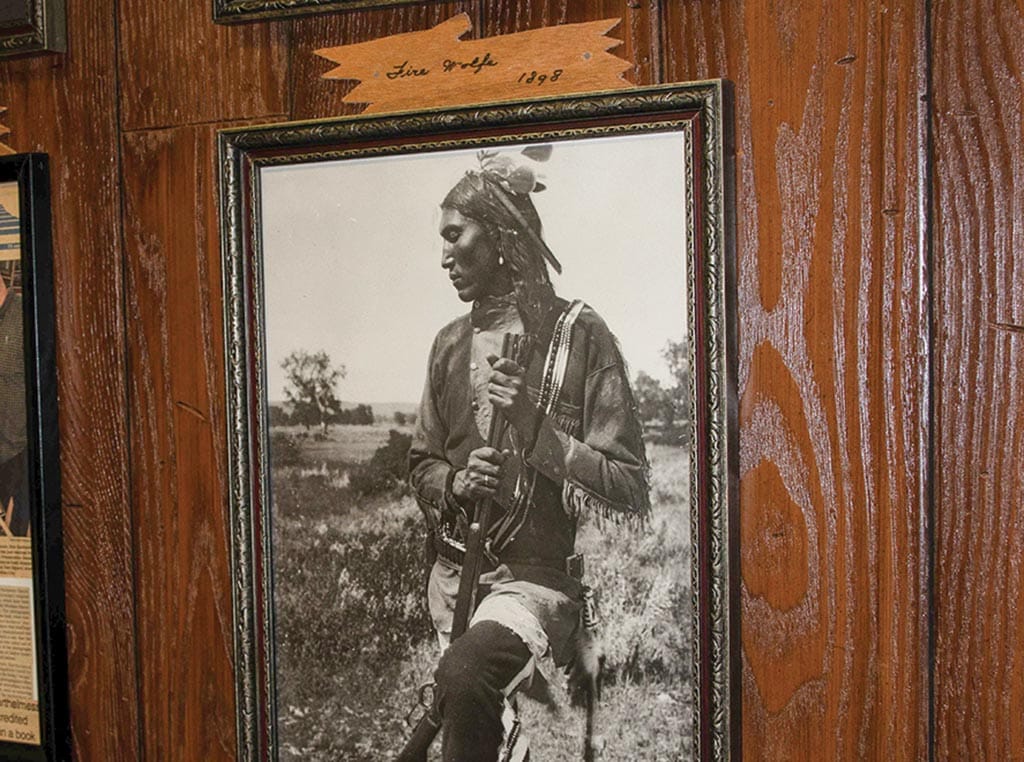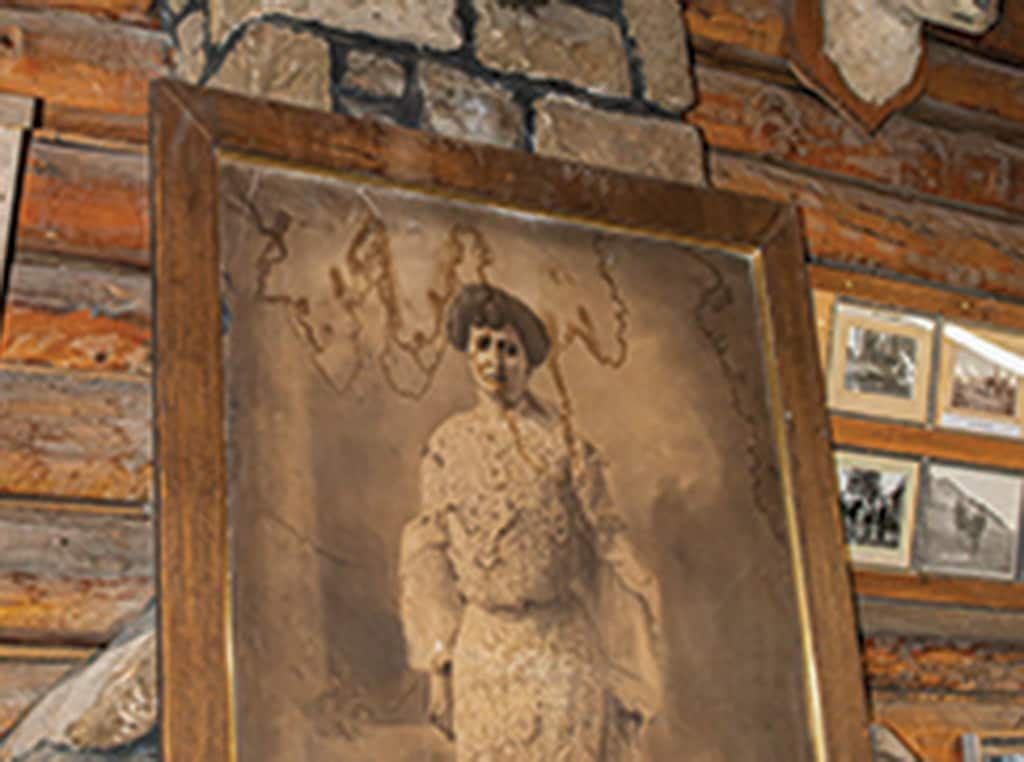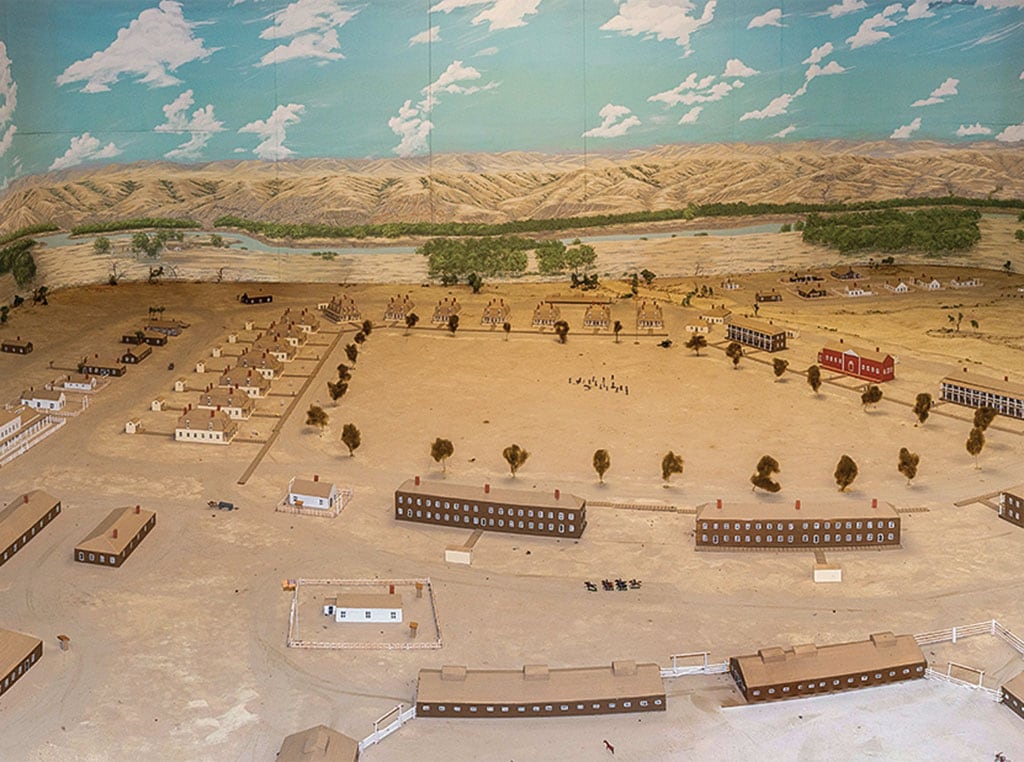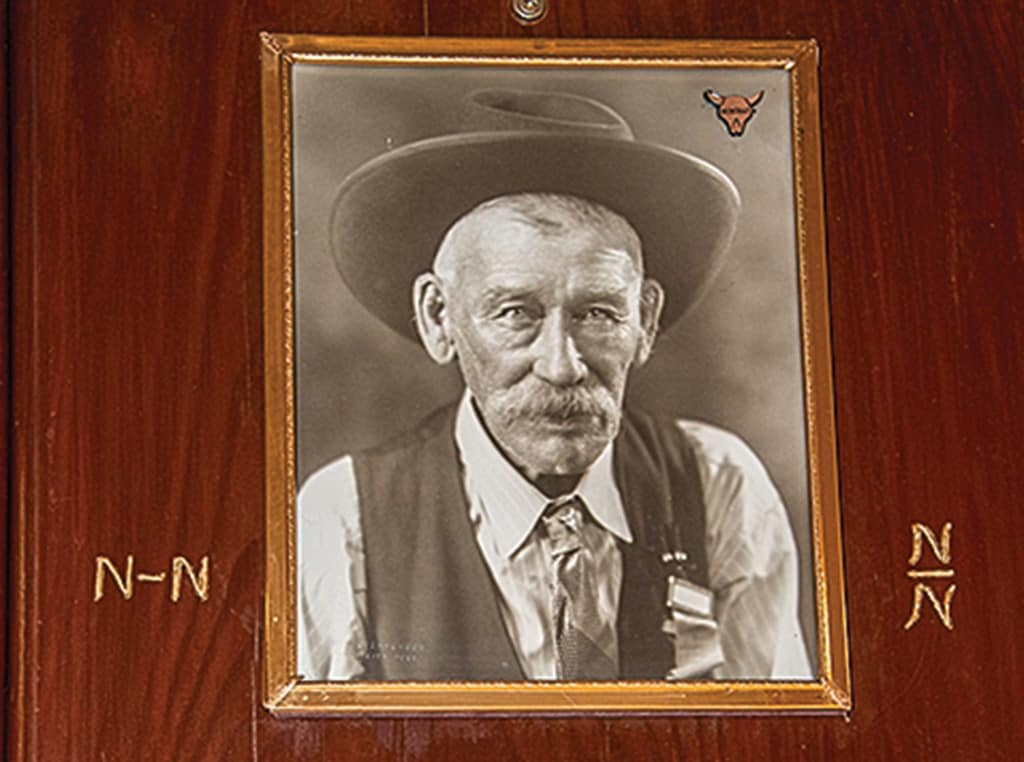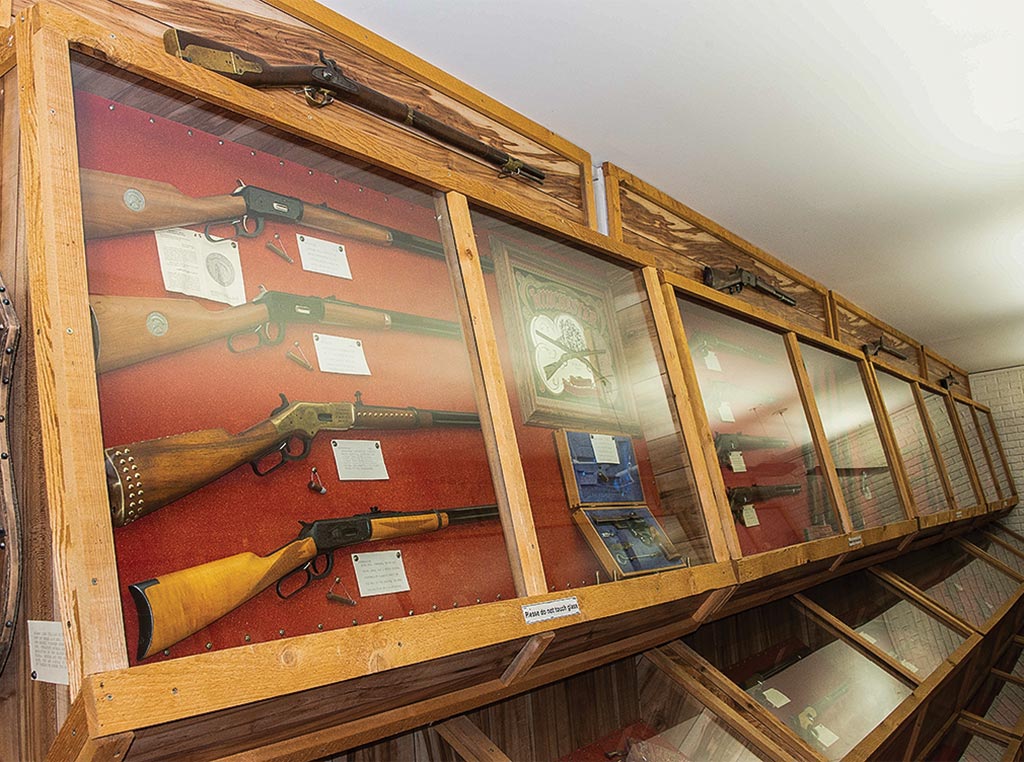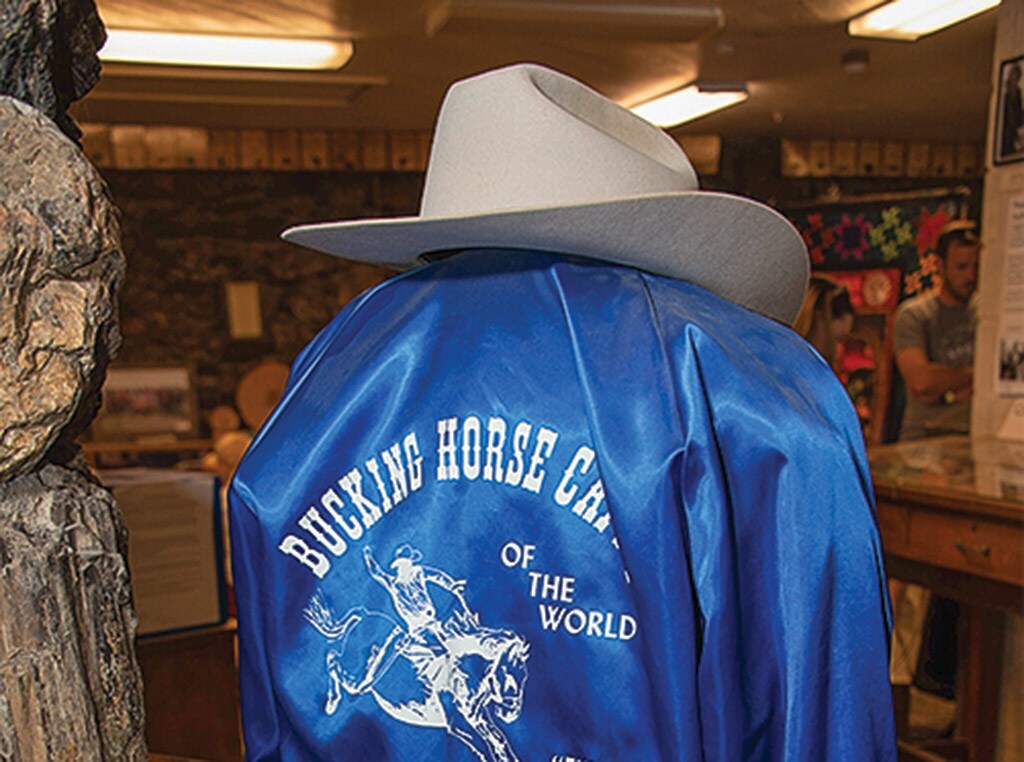Rural Living, Education January 01, 2022
Cowboy Curators Craft World-Class Collections
A tale of two rural Montana museums with ranch roots and Smithsonian class.
The Smithsonian? A natural history museum? (New York, Chicago, Los Angeles, pick one, it doesn’t matter.) They may be big and grand, but they don’t have a thing on the collections that have come through teeny, tiny middle-of-nowhere Carter County Museum in Ekalaka, Mont. A place so firmly on the edge of nowhere, two highways terminate there.
“We provide 90 million years of comprehensive history,” laughs Sabre Moore, the museum’s executive director, sitting along a wall covered in locally collected volcanic rock, sandstone and rancher-donated petrified wood. The unique facing was done by area ranchers and students earning extra credit or working off detention.
Local farmers, ranchers and the town’s 363 or so residents largely donated the collections and built the museum founded in 1936.
Carter County has been the prehistory map for more than a century. Barnum Brown, a paleontologist and collector for the American Museum of Natural History, made his name, ‘Mr. Bones,’ in southeastern Montana. Here he found the first documented Tyrannosaurus rex in 1902.
While he and other palaeontologists poked around, local homesteader and senator to Montana’s State Legislature, Walter H. Peck, watched and learned. He went on to be a founding member of the Carter County Geological Society and drafted legislation to allow for county museums in the state.
“The bill passed and he raced home to do the paperwork,” Moore says, making Carter County Museum the state’s first county museum.
Above. Rancher Don Wyrick, pictured with a Brachiosaurus femur, has dug many bones. He donated the T-Rex cast. Jake Sramek and his son, Ellis, checked out up close at the annual Dino Shindig. Ranch kid turned museum director Sabre Moore shows off a mammoth jaw. The museum has only 12% of their fossil collection on display.
Boots down.Even in the late 1800s, locals had bits of dinosaurs they’d collected. When Smithsonian curators and other experts came, they’d show off their finds, like the 9-inch thick Pachycephalosaurus skull dome now displayed at the American Museum of Natural History in New York.
“Roughly 75% of our paleontology collection comes from area ranchers,” says Nathan Carroll, curator of paleontology. “They’re the ones out interacting with the landscape. If they know what to look for, bones aren’t hard to find.”
Carroll grew up on a local ranch. He recalls always having an eye on the ground looking for arrowheads, bones or clues. “Bones are made of phosphorus, which plants love, so I watch for unexpected plant growth,” he says.
While out looking for a missing bull, Carroll’s dad, Llane noticed an out-of-place pile of shiny rocks. “He found some bones around it and asked if I thought it was anything of interest,” he says.
It was. The rocks were equivalent to a bird’s gizzard stones, but were used by a Plesiosaur—Loch Ness-looking marine reptile.
Baker, Mont., rancher Don Wyrick has long had a keen eye for fossils. “I was home from war and raising cattle. I needed a hobby and didn’t have money, so I learned about dino hunting,” he says, sitting at a dig site near a massive likely Brachiosaurus femur.
“I like old stuff, and dinosaurs are old,” he laughs. The Wy-Rex on display in Houston was his find, as was a “trike” skull (triceratops). He donated the cast of the Wy-Rex to the Carter County Museum.
He’s been digging for decades and curates his own private museum on his ranch. “I have the only chunkasaurus on display,” he laughs, using a term for bone fragments not connected to a skeleton. It mixes everything from “trike” vertebra to bits of turtle.
Above. Range Rider’s curator, Bunny Miller with the photo of her great grandfather, Christian Barthelmess, in the memorial hall. He took stunning photos of Native American friends. The museum also features donated collections, a grand photo of the local Madame who married the sheriff, walls branded by founding members and iron fences featuring brands of modern ranchers who still lend support.
Top side. The Carter County Museum has their share of wild west content, but it’s the focus of the Range Rider’s Museum just down the road in Miles City, Mont.
While 13 buildings hold countless artifacts—including a 150-year-old donut that made it through the Civil War in a local soldier’s pack and was saved by his Aunt—the real treasure resides in the memorial hall.
Just through the main log building built by the five cowboys who started the museum to preserve the history of their open-range lifestyle is an expansive room. Its long walls are blanketed in row after row of old portraits.
They feature those born prior to 1915 who lived within 150-miles. They aren’t famous, just folks who rode the range, built the railroads, were soldiers, etc. People of a community. Plaques bear titles, such as ‘rancher’, ‘stagecoach driver’, ‘Dean of Cowboys’ and scroll holders cradle their individual histories.
“Sometimes it’s a funeral brochure, sometimes a 15-page book,” says Bunny Miller, who curates the museum with husband, Gary. Two of her great grandfathers were founding members. Their photos are among the trove of roughly 1,500 portraits.
The hall is host to dinners, dances and community events. Miller loves watching people hunt down relatives and show their kids. Genealogists love it.
“Those little tubes are genealogy treasure troves. Sometimes we open them and there’s everything the person could have wanted. Other times they just get a smidge of information about their relative, but it’s a smidge more than they knew before,” Miller says.
Miller shows off the photo of her great grandfather, Christian Barthelmess. He’s dressed in odd regalia, but Miller explains he was a historian and the photographer for Fort Keogh when he wasn’t traveling the world documenting cultures.
He befriended members of area tribes, taking stunningly intimate, and largely unknown, photos of the native peoples. It’s rumored some of the region’s more famous photographers took his photo plates and juxtaposed the subjects with new backgrounds.
“Old timers have told me they could tell which photos were his because the other photographers were afraid of the Native Americans and would never have photographed them so closely or intimately,” Miller says.
Chipping In. Miller proudly states the Range Rider’s Museum is privately owned and run by a board. “We receive no funding from the county, state or federal government and almost everything we have has been donated by the people of the community. We have artifacts from railroad men, military, bankers, architects, teachers and cowboys,” she says.
A big draw is the Burt Clark gun collection. Clark was a local mechanic. He brought guns home from World War II and collected guns. “If someone didn’t have money to fix their car or their tractor, he’d barter with them for a gun,” Miller says. The result was an impressive collection which he donated a fair chunk of to the museum.
An extensive collection of broad axes used to prep logs and build many a homestead was donated by a Wyoming man. “My dad started talking to this fella who seemed to be scoping out the museum,” Miller says. Instead of theft, he had donation on his mind. “He told dad, the curator at the time, he’d been in a lot of museums but that this one had a different ‘tilt’ to it and he’d like to see his collection here.”
Another suspicious acting guest kept running in and out to his car. When confronted, he asked Miller’s dad—who spent countless hours building detailed dioramas of Fort Keogh, the massive LO Ranch and Native American settlements—why he had Cheyenne teepees in a Sioux village. “Turns out he taught history of the West Plains Indians in Germany and pointed out dad’s error. They became lifelong friends.”
Many such tales can be told of both museums that serve to collect as many stories as they do artifacts. And if there’s one thing the cowboy-types who founded and those that still curate these treasured rural museums surely share, it’s the love of a good story. ‡
Above. Detailed dioramas, cowboy histories and robust donated collections fill Range Rider’s Museum. The Carter County Museum features local, Feek Tooke, who crossed Arabians with Shires creating the modern bucking horse.
Read More
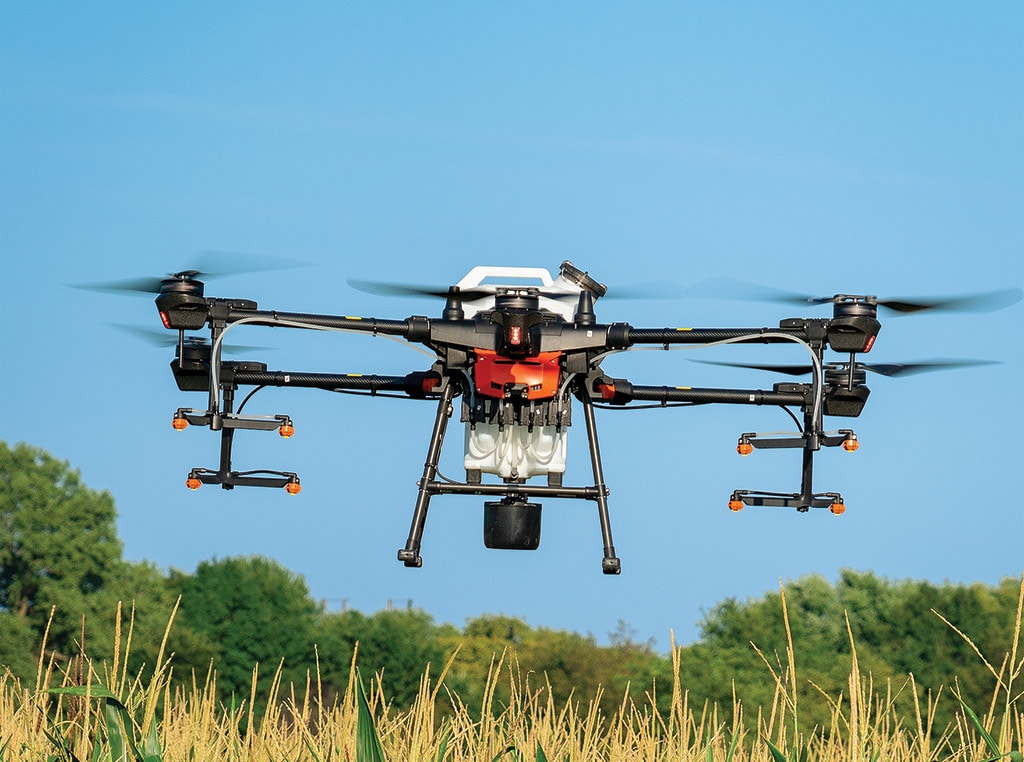
AG TECH, EDUCATION
Counting Corn
Drones in agriculture are getting smarter and becoming more practical on the farm.
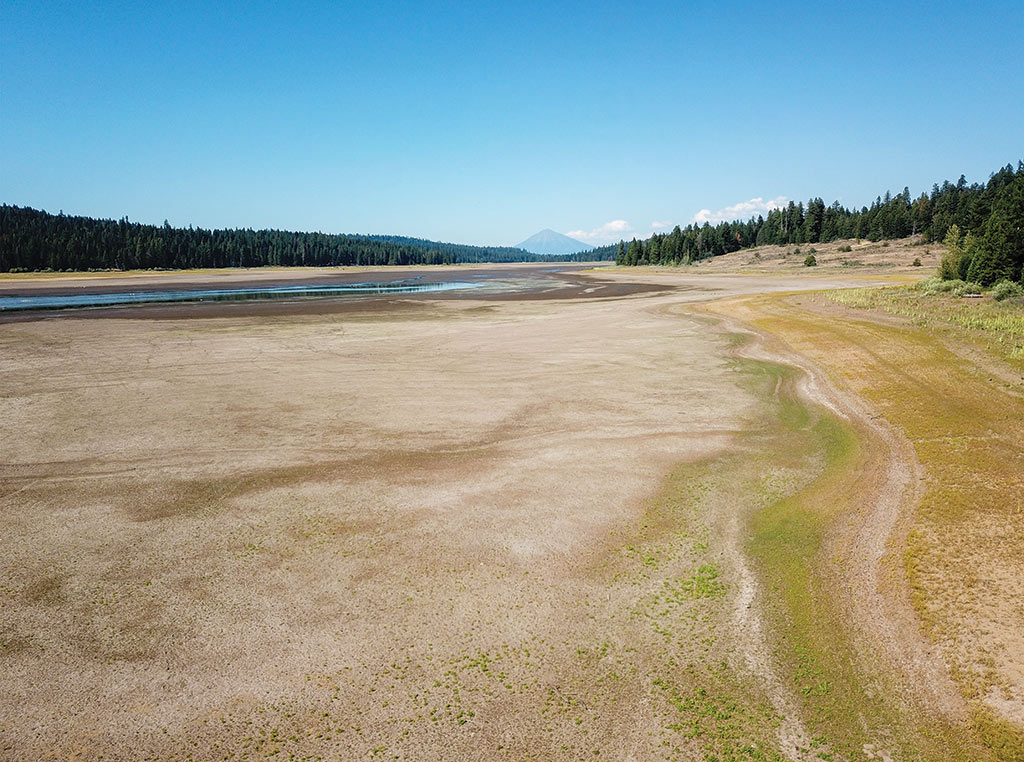
AGRICULTURE, EDUCATION
Dealing with Dought
Combining tech and creativity to farm when water is short.

